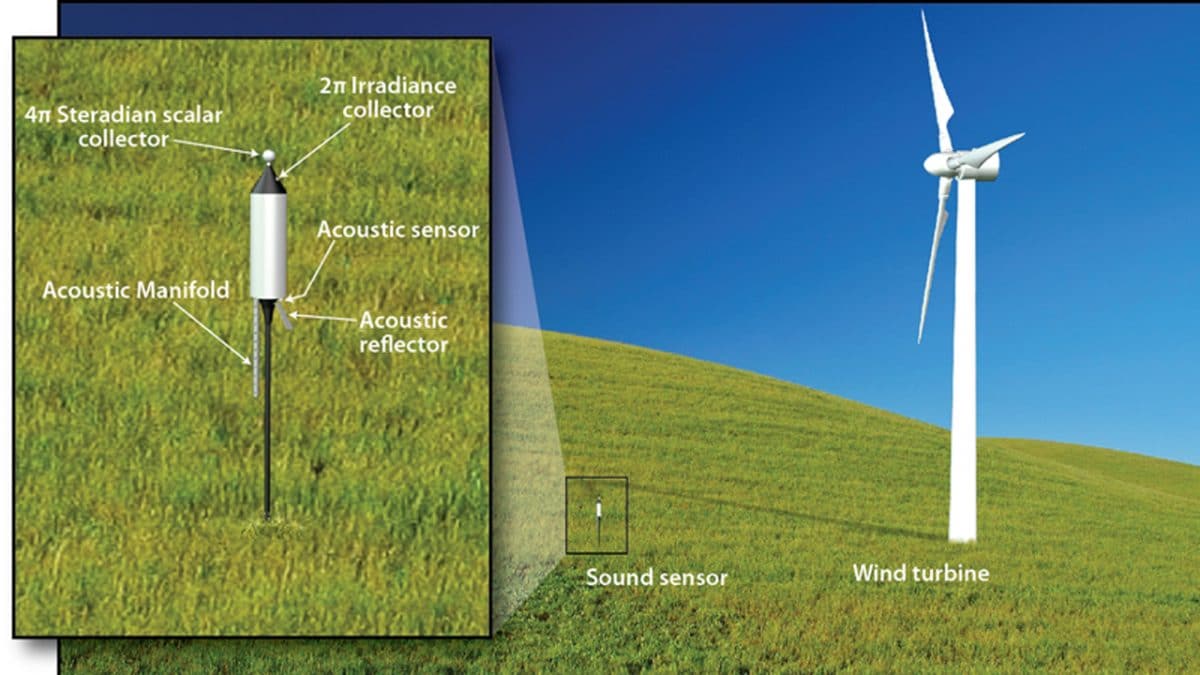Woods Hole Oceanographic Institution Announces Innovative Wind Turbine Monitor
 (Woods Hole Oceanographic Institution)
(Woods Hole Oceanographic Institution) August 16, 2016
Woods Hole Oceanographic Institution (WHOI) announces the issuance of U.S. Patent No. 9,395,338 for self-regulating terrestrial turbine control through environmental sensing.
Wind energy is a widespread clean alternative to energy from fossil fuels. The increasing number of wind turbine installations highlights the need for comprehensive consistent environmental data, and the ability to instantaneously regulate the operation of wind turbines in response to immediate changes in environmental conditions from both external sources and the turbine itself.
The Multimodal Environmental Impact Monitor, or MIME, developed by engineers at The Woods Hole Oceanographic Institution, utilizes an all-in-one sensor package that measures flicker, acoustic noise, and vibration generated by wind turbines. Alone or in combination, data from these modalities may then be used to provide input for turbine control paradigms in order to optimize turbine operations and/or maximize energy production.
Turbine performance management as well as site and environmental impact assessments for wind turbine developments, are presently hampered by lack of available weather tolerant instrumentation and inadequate sensors. Thus, appropriate long-term time series assessments are not made, environmental and human health impact is not accurately determined, and output is not optimized.
“Current models for blade shadow flicker don’t take into account surrounding reflectors or structures, only topography and sun placement, and such estimates may be inaccurate,” says WHOI Senior Engineer & MIME Inventor Paul Fucile. Fucile also notes that measurement of turbine infrasound generation has become an area of interest in recent years – particularly because of its potential health effects on those living in close proximity – and is something that MIME measures with great accuracy.
Accurately determining the environmental impact and site suitability for new turbine installations allows for responsible planning and building and also allows developers to establish an accurate pre-installation baseline.
MIME is intended for permanent installation at turbine sites for persistent observation with the option for turbine control, or can be placed on a tripod for short-term studies of multiple sites. It’s designed for ease of use. “The goal is to provide something that is affordable and user-friendly,” says Fucile.
More information on MIME can be found at Woods Hole Oceanographic Institution’s Office for Technology Transfer website https://techtransfer.whoi.edu/ under “Licensing Opportunities.”
WHOI is a private, nonprofit research and higher education facility dedicated to research and education to advance understanding of the ocean and its interaction with the Earth system, and to communicating this understanding for the benefit of society. Please visit http://www.whoi.edu.
